READING LATIN AMERICAN THIRD CINEMA MANIFESTOS TODAY
Moira Fradinger
 FORWARD
FORWARD
 DOWNLOAD
DOWNLOAD
 ABSTRACT / KEYWORDS / ARTICLE / FOOTNOTES / BIBLIOGRAPHY / ABOUT THE AUTHOR
ABSTRACT / KEYWORDS / ARTICLE / FOOTNOTES / BIBLIOGRAPHY / ABOUT THE AUTHOR
In the future there will no longer be painters but rather men who, among other things, dedicate themselves to painting (Marx) (Julio García Espinosa, For an Imperfect Cinema, Cuba, 1969)
The formal choices made by an artist will be governed by his or her ideological inclinations. (Jorge Sanjinés, Problems of form and content in Revolutionary Cinema, Bolivia, 1978)
A language of tears and suffering is understood through paternalism. (Glauber Rocha, Aesthetics of Hunger, Brazil, 1965)1
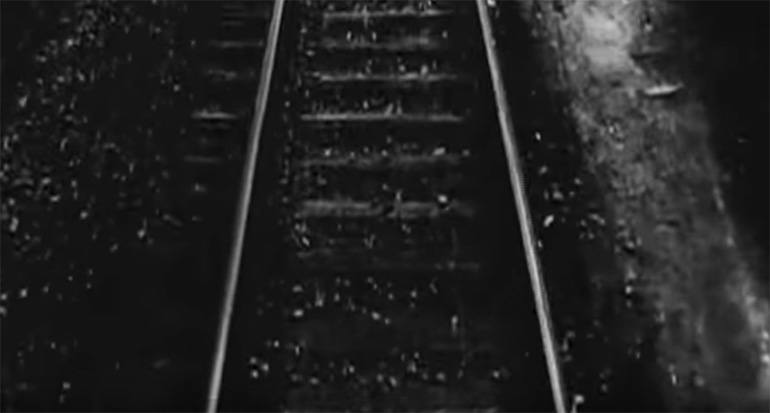
Disposable Lives: itineraries of hunger and thirst
2005: No One (De nadie). Visually echoing the nineteenth century ‘phantom ride’ cameras filming the railways from the point of view of the train at full speed2, Tin Dirdamal’s light camera shoots railways from the train, over a black pebble background. In between the rails appear the credits of the documentary in which Dirdamal captures the trip of Central American migrants to the north. A quote from Eduardo Galeano –“the no-ones dream of a way out of poverty”3– and statistics precede the interviews that follow. These are segmented with the same image of the railways over the black background. In between them, Dirdamal inserts some statistical data, always chilling, about the painful migration of those who have nothing.Throughout the documentary, the moving train appears cyclically as it crosses frontiers, such as that of southern Mexico, away from Honduras, passing through El Salvador. The train is as much a protagonist as the migrants: the shots are taken from low angles, high angles, from the side, from behind, from above. We see migrants on the roof of the train, on the hinge between the wagons, as they get on the train passing at a slower pace through small towns. The first goal is Mexico. Sometimes they reach the station of death before reaching any intermediary frontier or the final border with the United States. Along the way, men are assaulted; women are raped. They can be thrown from the roof of the train, which mutilates their arms or just kills them. They can throw themselves voluntarily in order to avoid the police. Interviews are meant to give voice to migrant victims, witnesses, and ‘experts’ who explain this world to us. In minute 50, the documentarian shows a still photograph in black and white to the migrants he interviews: it is a photo of people that see the train passing by and give food to the migrants who reach out from the train to seize the offering. The black and white photo tells us that the migrant tradition has a long history. Town people get used to the alert of the train whistle and go out to offer food. We see the re-enactment in real time of this act of charity by a woman after the still photographic image. The spectator understands the explanation – of the ‘expert,’ yes, but more so of the woman. They call it ‘the shoulder of the beast,’ ‘the route of hell,’ ‘the death-train’: it is the connector train between Mexico and the USA proliferating in all kinds of documentaries and also reaching Hollywood and commercial Latin American cinema.
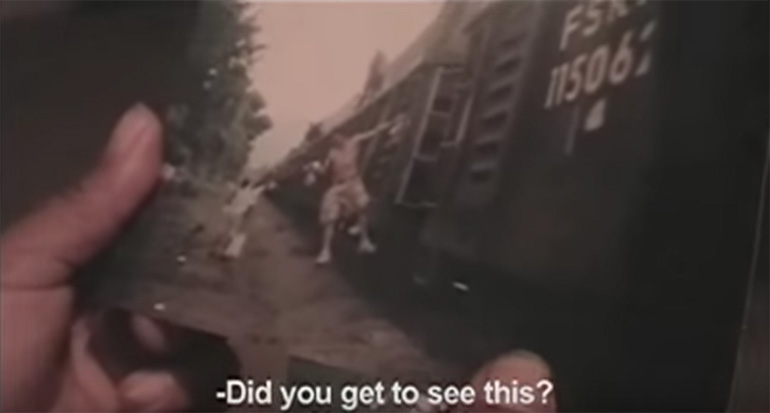
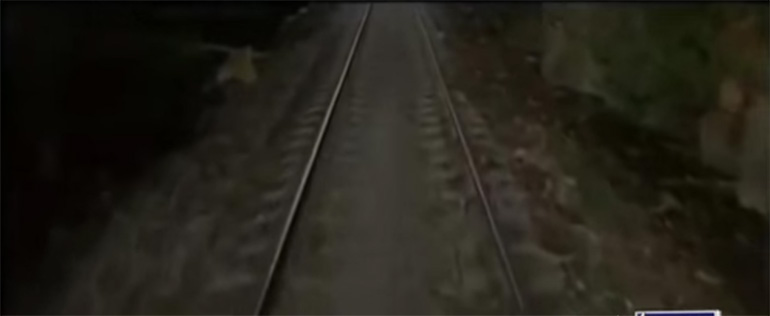
2013: The Golden Dream (La jaula de oro). Diego Quemada-Díez won several awards with the fictional version of the very train documented by Dirdamal. In minutes 53 and 63, we see once again the scene of the food offering. The Golden Dream is the story of three migrant teenagers becoming heroes in an adventure that the spectator follows breathlessly. Only one of them reaches the north: the spectator suffers his pain. Quemada-Díez chooses commercial narrative forms, but recalls documentary strategies so precisely and powerfully that the images sometimes are direct echoes of Dirdamal’s documentary. For Quemada-Díez it was a question of ‘taking the best of fiction and the best of documentary’: the dramatic structure, the acting, yes, but with non professional actors, with real testimonies, about real facts, and in real locations. The director does not give the script to the actors beforehand so that he can capture their vital experience – just like in a documentary and in ‘real life.’ (GOODMAN and GONZÁLEZ, 2015) And it was the scene of inaccessible food that once again inspired the director: Quemada-Díez remembers the family near the railways in Sinaloa who would prepare food for the migrants arriving on the train to the station.
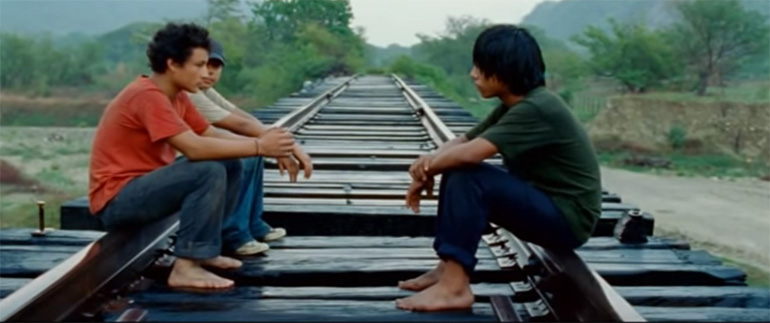

1958. Throw a Dime (Tire Dié). Who does not remember it? It was the ‘first filmed social interview’ that pioneered Third Cinema. Who does not remember those children in the slum in the outskirts of the Argentine city of Santa Fe that Fernando Birri’s student team filmed waiting for the train to ask for a dime to its passengers, who looked from their windows at the slow pace of the machine coming close to the station? This is the train that offers us a historical continuity in the tradition of political film, coming to a halt before the gaze of the excluded, and becoming emblematic of the Third Cinema that took to the screen all the manifestos of the sixties – starting with the manifesto of the School of Santa Fe (Cinema and Underdevelopment, 1962), which wanted to ‘show reality as it is’ and at the same time ‘negate it.’ (BIRRI, 1962; see translation in MARTIN 1997: 95-99)
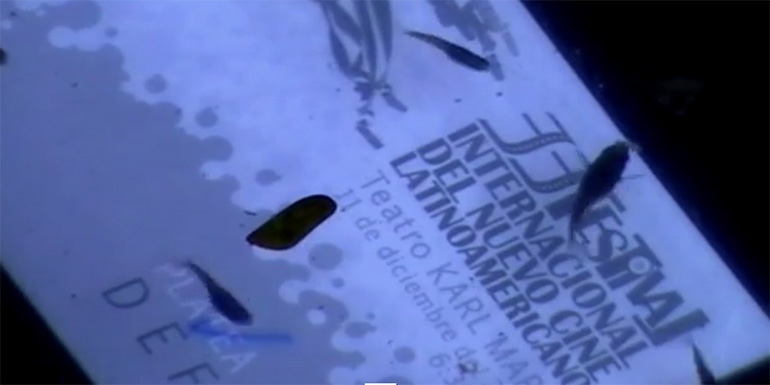
One could craft a similar itinerary to that of inaccessible food for inaccessible water. Latin American documentaries about the danger of the so-called ‘water wars’ proliferate as much as those about trains with hungry migrants. There’s good reason: if Latin America provides more than three million migrants to the north per year, it is also true that with only 12% of the global population it hosts 47% of the fresh waters of the planet. War is coming. In minute 6 of Cuban Eliecer Jiménez Almeida’s short The Face of Waters (La faz de las aguas, 2012), the camera shoots a printed film program that reads ‘XX Festival del Nuevo Cine Latinoamericano’: it is sinking under stagnant water. Even the New Cinema contaminates waters: just as much as all those products of capitalism that this cinema criticized for decades. For 9 minutes we see image after image of fresh water that exists but is useless. The montage of a clock under water, a city sewage, a beer can, a floating bottle, plastic packages of all kinds, a crow picking out of a skull at the margins of a lake, a tennis shoe stuck on the mud, dripping taps, the paper under water, and the soundtrack of the tick tock of a clock and running water (the running of time, the few minutes left before the catastrophe), leave our eyes saturated with filthy water. We go to the kitchen sink and we find it hard to open the tap and fill the glass with water to drink. The short is accessible on Vimeo and it is presented thus: ‘According to the World Water Forum, in Latin America between 80 and 100 thousand people die yearly due to consuming the contaminated liquid that is essential for the survival of all forms of life. Problems persist… We lose time. What do we need to take care of our thirst? Become conscious!’4

For Dirdamal it is also about raising consciousness and filming the water war, just as he filmed the migrant trains. In 2011 he decided to make a documentary about the struggle of the people in Cochabamba during the year 2000 against a multinational company that wanted to privatize water: Rivers of Men (Ríos de hombres). Everything had started with the 1970 drought that left Cochabamba without water. The company that was licensed with the distribution of water increased fees by a staggering 400% and even ‘privatized’ rain water, by prohibiting people from collecting it in buckets. The people fought and won. Dirdamal wanted to be part of this struggle and give voice to the people. However, during his research to make the documentary, he raised his consciousness indeed: he unexpectedly had to tone down his optimism, given that the rain water had not really been ‘privatized.’ This wording had been a metaphor politically used to benefit a different power sector: the people had believed lies, the documentary explains to us. And water ended up being ‘like petroleum’: it is ‘contaminated,’ says a man in minute 37. In minute 61, a man says with sadness: ‘the problem of drinkable water has no solution’; in minute 67 another man says ‘one day the planet Earth will grow tired of us, she will throw us upside down, extinguishing all that is the human system.’
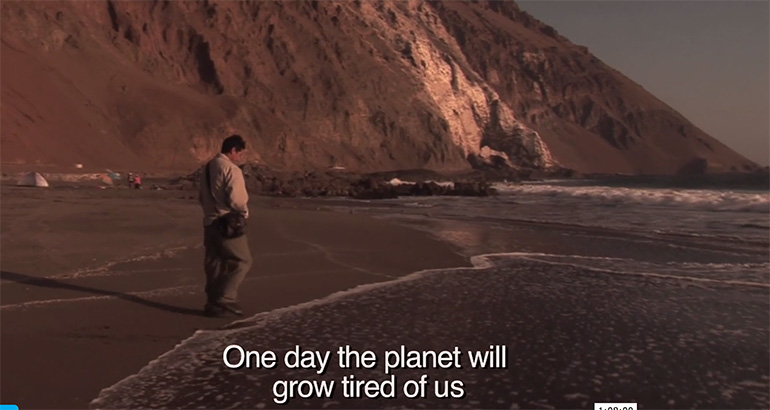
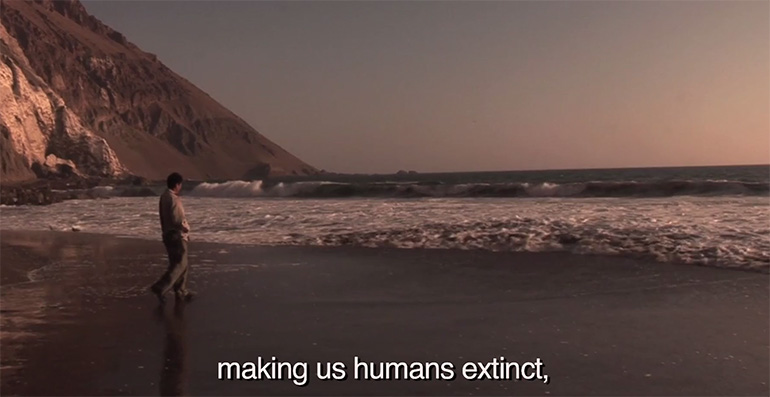
Water also went to Hollywood but in the form of melodrama: the award-winning Even the Rain (También la lluvia, 2010) was filmed in Bolivia by Icíar Bollaín’s team, but with a dramatic structure of heroes, tears, and salvation. However, Chilean Juan Esteban Vega chose a different form for his fiction about the water war in 2013: his movie Thirst (Sed) is almost homage to Glauber Rocha. In a mining town in the middle of the desert people are, apparently, paid their salaries in access to water. The arid images burn our eyes. There are sepia tones and lots of ragged clothes and filthy people. There is also a saint, crucified in the desert – perhaps in the best tradition of quoting Brazilian Cinema Novo. A family in tatters creates their own utopia: to gather enough water to cultivate a little farm of their own. Near it they construct a hut with tin and cardboard. But the last shot is the hut keeping the farm but inexplicably not the humans: it is empty.
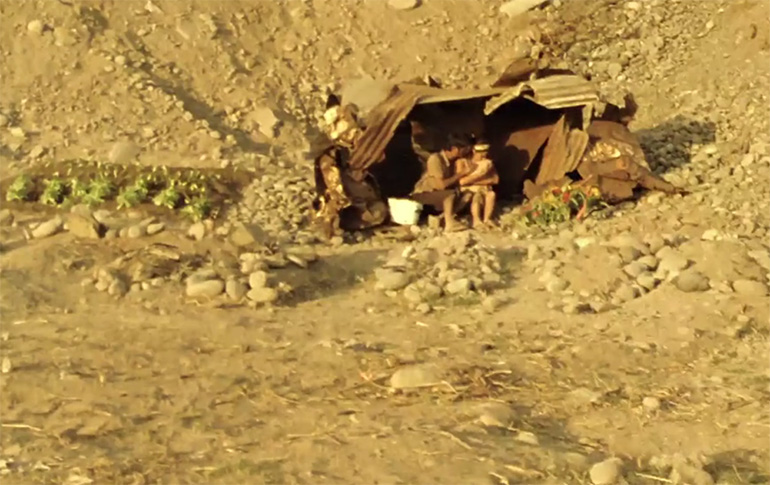
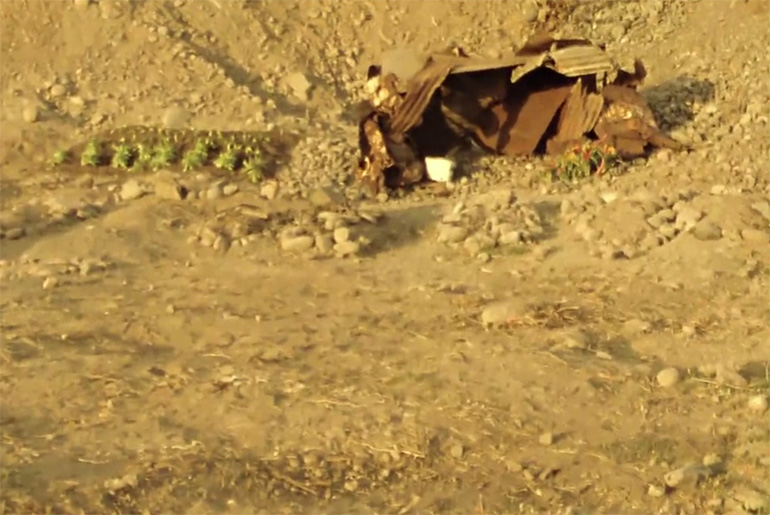
1959. Araya. The three hour long movie from which Jean Renoir did not want its director Margot Benacerraf to cut a single shot, filmed under the burning sun in the salt mines of the Venezuelan peninsula. The images of deserts, drought, thirst, dead animals under the sun, are as inspiring for the pioneers of Third Cinema as the trains. Recall the pioneer image of the dead goat on the salt beach (minute 49) under the blazing sunlight of Araya. Araya inspired Rocha to film in the Brazilian northeastern sertão: remember Manuel’s severe look after the two close-ups of the teeth and the eye sockets, full of flies, of a dead horse lying on the desert at the beginning (minute 2) of Black God, White Devil (Deus e o diabo na terra do sol, 1964). And of course, how to forget the terrible drought that kills the animals that Fabiano finds in his nomadic wandering through the northeast in Barren Lives (Vidas Secas, Nelson Pereira dos Santos, 1963). Just as it was for Birri, the question was how to change this terrible reality: think of the desert that becomes the sea in Rocha’s film, or the last dialogue between Fabiano and his wife in dos Santos’s film, in which both agree that they will not be able to survive if they continue to be less than animals.
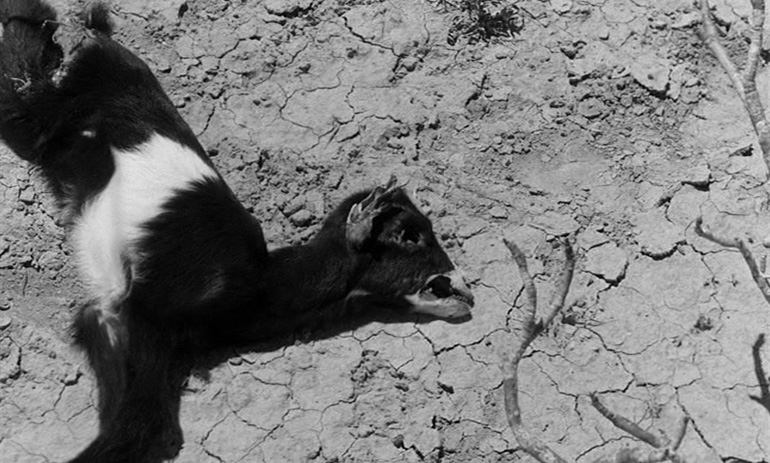
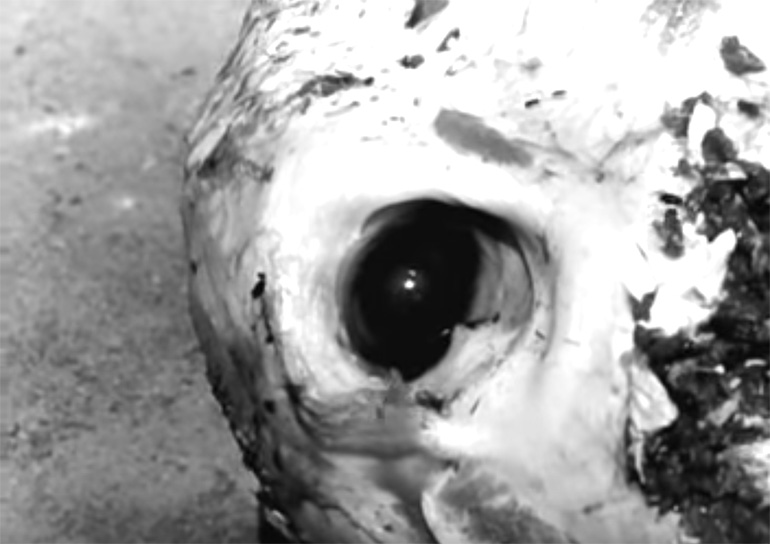
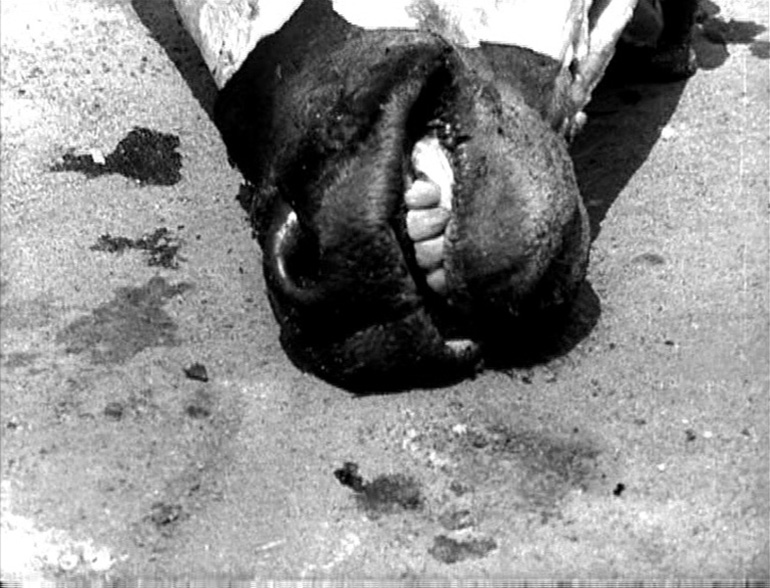
If it has been said that the train is the great metaphor for modernity and cinema; if it is true that cinema begins by filming the arrival of the train even in the silent newsreels in Latin America5; we may say that the montage of images of thirst and hunger around the train of modernity that arrives to the station marking the difference between the passengers inside and those who are left outside, is the great metaphor for the critical tradition of political documentary (or ‘docu-fiction’) from its inception. I refer here to the thirst and hunger of the beginnings of the twentieth century. The first minutes of the first Kino Pravda that Dziga Vertov filmed in 1922 show a montage of images of hunger and thirst among children under, on, around, the train. The first inter-title says: ‘save the hungry children.’ We look at Melekes train station; we see starving children searching for crumbs of food on the soil near the railways; a straw roof half destroyed because it has been eaten by those who starve; a man throwing kitchen garbage from the train onto the ground and the children eating those food remains; other starving children wait on the wagons and platforms for the arrival of the ‘sanitary train’ from Moscow with food, clothes and doctors. It is the 1921-22 famine of the Volga region. It is the ‘actuality’ feeding the documentary tradition from the start. And it is also the desire for another world, which fuels the tradition of political documentary: in the same Kino Pravda, the next sequence is a solution of sorts to the problem of hunger. We see how public officers at the Church confiscate its precious metals in order to fund the food for the poor – the inter-title says: ‘each pearl saves a child’.6
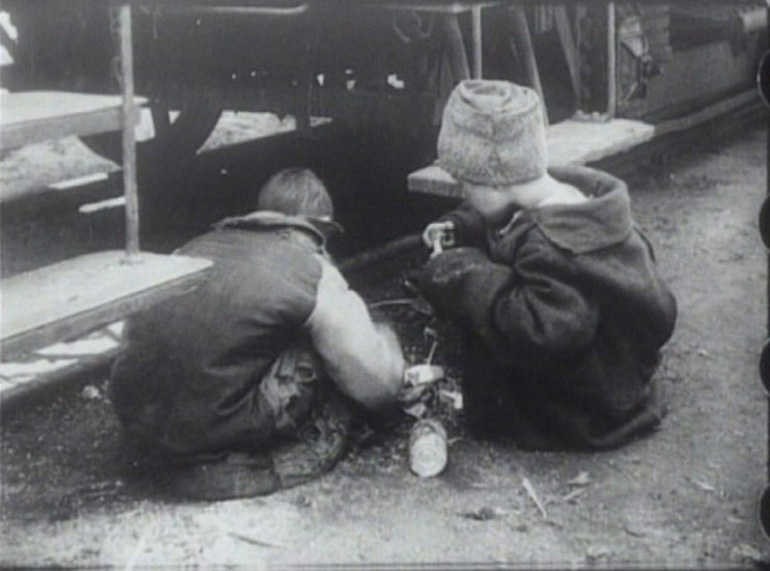
Between the uncertainties of today and the certainties of the sixties
While my inspiration to reflect on the political manifestos of the Latin American Third Cinema of the sixties comes from the historical persistence of certain images of trains, hunger and thirst in the tradition of political cinema from the twenties to this day –a continuity best captured in the unforgettable title of Glauber Rocha’s manifesto Aesthetics of Hunger (1965)– this is not simply because our twenty-first century images keep demonstrating that modernity never arrives, or that capitalism deepens misery, to the extent that today it not only excludes millions of lives but also expels them from any global vital space, as sociologist Saskia Sassen observed in her last book Expulsions: Brutality and Complexity in the Global Economy (2014). To mention other examples that capture the present anxiety: Thomas Piketty (Le Capital, 2013) speaks of a new type of concentration of wealth that takes us back to the world before WWI; Mike Davis considers that we live in a ‘planet of slums’ as the result of post-seventies neoliberal economic policies (Planet of Slums, 2006); Danny Dorling’s recent book summarizes it by asking if society can really afford the ‘1%’ (Inequality and the 1%, 2014) without collapsing. In this panorama, in which sense can one say today that the desire of the Third Cinema manifestos to ‘give voice to those without voice’ is extinct among those who possess the means to make independent cinema? In none, I believe. To affirm the contrary would be to fall into the cynicism so useful for the machinery to remain intact.
I am not only inspired by the montage of images of trains, hunger and thirst to which the current global capitalist development has habituated us with its now almost ‘normal’ expansion of the gap between the so-called ‘1%’ and the rest. I am also inspired by a different type of urgency which was not so visible when Third Cinema filmmakers wrote their manifestos. A new urgency that makes more relevant than ever what I would call the ‘planetary keys’ contained in the sixties manifestos. With the phrase ‘planetary keys’ I refer to the declarations written in tension with those indicating the need for the local (the ‘Latin American regional’; the ‘Brazilian national’; ‘the Bolivian national’, etc.) and pointing instead at the articulation of a universal technology such as cinema with a universal mode of production such as capitalism. In brief, I refer to the general thought in these manifestos speaking to the articulation of aesthetics and politics.
The singular urgency of our present surpasses the imperative that in some of the sixties manifestos was expressed as the need to universalize the then incipient ‘socialism’ of the era. Our urgency is a product of an experience that I would locate in the unsettling of a ‘regime of certainties’ that organized political cinema in the twenties, among Russians and Germans, and that was valid for the Third Cinema of the sixties in the ‘global south’ (including some of the European independent cinema at the time): certainties that many would call today ‘the discourse of an era’ –with its implication of being ‘dated’– but precisely because of that, I believe, having the potential for a necessary intervention that may simply need updating, not discarding.
What do I mean by the ‘unsettling of a regime of certainties’? The sixties manifestos could be relevant in their time because they accompanied their social movements, but also because they picked up the ‘planetary keys’ of a previous tradition: that of the manifestos of the twenties. Maybe it was not so much a question of the utopian mission that someone like Vertov would assign for the ‘kino-eye’ to surpass the human eye: as he would put it in his Resolution of the Council of Three (1923), ‘we exerted violence on the camera forcing it to copy the work of our eye […] starting today we are liberating the camera and we make it work in the opposite direction, away from copying. The weakness of the human eye is manifest’ (VERTOV, 1923/1984: 16). The sixties manifestos wanted to liberate the eye but not to widen perception in accordance with the mechanics of the (Vertovian) machine. Rather, it was to clean the eye of the ideological spider webs that would prevent us from seeing ‘reality as it is’ and would force us to see it ‘as we wanted to see it’ (BIRRI, 1962). But just like the Russian ones, the sixties manifestos prepared for a new political world: for Latin Americans there was a certainty, Birri again, that they would ‘make a new man […] and thus a new art’; ‘and in witnessing –critically– how this reality is [cinema] negates it. It denies it. It denounces, judges, criticizes, dismantles it.’ The manifestos thus accompanied the global left-wing movements that believed in horizons of equality and justice realizable in this world – not in some other, utopian world. Third Cinema manifestos were nurtured by that ‘epochal imagination’.
One may visualize immediately the ‘certainty of an era’ with a phrase cited in the first minutes of that filmic version of Solanas’s and Getino’s manifesto Toward a Third Cinema (1969) – the famous ‘film-act’ or ‘film-essay’ they called The Hour of the Furnaces (La hora de los hornos, 1968). To the soundtrack of drums and on a black background, we read titles in white letters (advertisement style) such as ‘invent’ ‘organize’ ‘our revolution,’ followed by quotes of thinkers and political leaders of the time, like Aimé Césaire, Juan Domingo Perón, Scalabrini Ortiz, Frantz Fanon. But there is a title that we may see as the thesis that the film shares with its times insofar as it is not presented as a quote with an author: ‘no social order commits suicide’. The phrase nonetheless had an author: it belonged to the political leader of the left-wing in the Argentine Peronist Party, John William Cooke (1919-1968) (see COOKE, 1973: 121). It is fitting to clarify the ‘global’ nature of Cooke’s affirmation. He referred not only to the persistence of a dominant order to maintain its status quo, but also to the ceaseless insistence of the organized resistance against that regime.
That certainty, condensed in that phrase, is what we have replaced with a question: can we think today that ‘no social order commits suicide’? I do not refer here only to the thinking minds that resist the concentration of wealth, but also to the thinking minds that concentrate wealth: the bank and corporation reports that agree with the agonizing diagnosis of our disorder. I do not refer either just to the normalization of the permanent threat/uncertainty about the extinction of the planet: a threat embodied in the nuclear code in the hands of a few politicians. I refer to the postulations I mention above (can a social order afford the current social expulsion of so many [Sassen] and the current concentration of wealth [Dorling]?). I refer to the so disputed naming of our era as ‘the anthropocene,’ a name that emerges from scientific consensus on the annihilation of life in the planet, though I prefer the term coined by United States biologist Donna Haraway, ‘capitalocene.’ (HARAWAY, 2015) For some this era would have started the 16 of July, 1945 (with the creation of the atomic bomb) and for others 10.000 years ago with agriculture. In both versions, since 1970 we have seen the acceleration of a human domination that transforms all living matter into something quantifiable (that is, disposable if it does not produce profit). The destruction of the living is such that scientists talk about the ‘sixth massive extinction’ of animal species. What comes next, of course, is ours.
We lack the certainty not only about how to live but also about just living – are we on our way to extinction? Maybe one of Dirdamal’s interviewees in Rivers of Men summarizes it best: ‘the problem of water has no solution.’ Dirdamal and Quemada-Díez offer us the aesthetic forms of this epochal specter of uncertainty: an ‘aesthetics of absence,’ one may venture, to echo the phrase of ‘an aesthetics of hunger’ in Rocha’s manifesto. Dirdamal announces at the end of No One that he has completely lost track of one of the migrants he interviewed: is María alive? In the final credits, Quemada-Díez thanks the 600 migrants who participated in the film after a final close-up, filmed from a low angle, of the only teenage protagonist who survives the trip on the ‘shoulder of the beast’ and is now in the United States. Juan leaves his cleaning job at a meatpacking industry (or slaughterhouse) on a cold night in winter. He lifts his head toward the sky with a stern expression. The snow is falling. His fellow traveler Chauk, killed before he could arrive, had dreamt of watching snowflakes falling.
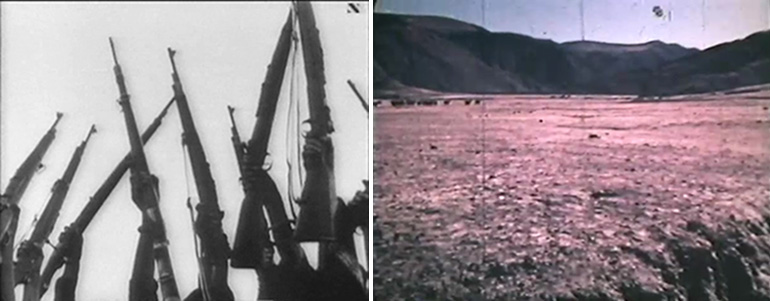
Third Cinema films were structured around a message, in the tradition of manifestos: if a certain state of things had taken the wrong turn, this should be changed. The call to action, or directly to arms, was implicit or explicit. Suffice it to recall emblematic examples of the entire movement. The famous last scene in The Blood of the Condor (La sangre del cóndor / Yawar Mallku, Jorge Sanjinés, 1969): a low-angle medium shot of peasant arms, each one pointing a weapon to the sky. The first scene of The Courage of the People (El coraje del pueblo, Sanjinés, 1971) with the long shot of miners holding the Bolivian flag as they march in columns through the highlands toward the place from which the camera shoots: the point of view of the military police situated at the high hill ready to shoot their machine guns. It may even be useful to remember scenes of that exceptional animal of the Third Cinema, Cinema Novo. Think of the allegorical final shot in Black God White Devil in which Rocha transforms Sérgio Ricardo’s musical theme for the film (the utopia of ‘o sertão vai virar mar’—‘the desert will become the sea’) into an image by cutting a general shot of the northeast desert with a general shot of the sea touching the coast.
Our immersion in the uncertainty of life happens in yet another context that was not present in the sixties: another aspect of impotence, this time the difficulty of processing a never-before-seen excess of images and communications. On the one hand, we confront the unprecedented excess of the production of ‘news’ in social media (what some have recently called ‘post truth politics’) and the demand for transparency in communications (phenomena such as WikiLeaks) given the increase of hidden regimes of surveillance. On the other hand, we confront the unstoppable proliferation of images produced by cell phone technologies of massive reach: ‘trash images,’ insofar as they end up deposited in dumping sites or simply vanish in the instant in which they are seen (applications such as Snapchat on cell phones). This ‘screen time’ excess imposes a question about what we are prevented from seeing outside of the virtual circuit and through our human perception – rather than a question about what this excess facilitates.
Three Third Cinema manifestos planetary keys for today
In the context of our uncertainties about political suicide, of the (im)possibility of other worlds, of the confusion between ‘true’ stories and an indigestible excess of images, Third Cinema manifestos paradoxically take on a new relevance precisely due to the ‘message of their times.’ As documents of that ‘other’ imagination they pierce the ‘pensée unique’7 that characterizes our historical moment; they break the ‘effort of normalization and concentration [of] neoliberal economic logic,’ to cite the 1995 Manifiesto Documental that appears in Jean-Louis Comolli’s collection Ver y Poder (2007: 210-211).
I focus here on only three of the manifestos’ many shared planetary preoccupations that crack our ‘pensée unique’: the proposal to change the relation between author and spectator (with its ensuing change in the conditions of production and circulation of visual stories); the imperative to transform the filmed reality first into something intelligible and then into something subject to criticism; and further, the demand that such intelligibility be achieved through a change of forms against the dominant narrative form, seen as contributing to the transformation of the potential author in any human being into a passive spectator.
The first planetary key that I mention –that the spectator become an author– runs through every single Third Cinema manifesto and stands as a clear echo of Fanon’s famous phrase: ‘any bystander is either a coward or a traitor’ (FANON, 1961/2004: 140) (a phrase very much used by Solanas and Getino, not only in The Hour of the Furnaces but also in the announcements of the film screenings at the time). This idea was translated into many formulations: to defend the right of everyone to be the protagonists of their story; to film ‘for and with’ the people; to recuperate the ‘voice of those without voice’ through their testimonies; to narrate from the ‘popular’ perspective; to prefer low-cost production, Super 8 and 16mm formats, natural locations, and non professional actors. But most of all, it was translated into the dream that everyone one day should have their own camera – a dream that was, by the way, present already in the twenties (remember Vertov and the cameras for his ‘kinocs’). García Espinosa’s manifesto For an Imperfect Cinema is the one that may have given the most attention to imagining a future against all film professionalization: ‘is it right to continue developing a handful of film specialists?’ the film maker asks rhetorically. ‘¿What happens if the development of video-tape solves the problem of inevitably limited laboratory capacity, if television systems with their potential for “projecting” independently of the central studio render the ad infinitum construction of movie theaters suddenly superfluous? What happens then is not only an act of social justice – the possibility for everyone to make films (MARTIN, 1997: 72) […] The task currently at hand is to find out if the conditions which will enable spectators to transform themselves into agents […] are beginning to exist. […] If he participates to a greater and greater degree, where will the process end up? Isn’t the logical outcome that he will cease being a spectator altogether?’ (MARTIN, 1997: 77)8
García Espinosa foresaw the digital technology and social media of today, which for many means the expected arrival of the train of film ‘democratization.’ It seems as though Third Cinema manifestos are indeed ‘of their times’ in terms of their dream of democratization. Finally we can see massive access to film at very low costs; distribution happens through very informal circuits; production makes use of a mixture of improvised techniques halfway between fiction and documentary; and nonprofessional actors appear from all walks of life in a multiplicity of communities that were until now invisible. In some cases this massive access has become state policy (consider the Agencia Plurinacional de Comunicación in Bolivia). Digital format has made possible the emergence of other ways of telling visual stories.
But it is not wise to erase so quickly the images filmed by Dirdamal; the teenagers that ride on the shoulder of ‘the death train’ toward Mexico’s northern border do not stretch their arms to film the train with their cell phones. They stretch their arms to reach for the tortillas that Mexican ladies prepare for them in each train station on their way north. Dirdamal captures this in minute 58 of No One, when the generous lady who gives food to migrants cries in front of the camera ‘you do not suffer, you have everything, you have food, a roof, a mother, a father, they have nothing.’ If the aim is to become ‘owner and protagonist’ of artistic production, who owns digital cameras, Internet connection, smart phones, access to networks where information is propagated and created? In an online interview, Dirdamal was asked, ‘If you were given $10 million to be used for moviemaking, how would you spend it?’ to which he responded: ‘There is this idea that with video format, films are now democratized. That practically anyone can grab their camera and tell what they want. I believe this is not so. Immigrants do not have access to making their own movies; indigenous people don’t either. So media and films are still controlled by the ones who have the money. With $10 million dollars I would buy cameras and give free workshops to several marginal groups in order for them to tell their own stories.’ (Indiewire, 2006)
As it is not wise to forget who owns the cameras, it is not wise either to forget the real meaning of ‘becoming authors’ in the manifestos of Third Cinema. What is filmed (and what does not fit the screen) on those millions of cell phones? How to overcome the divine temptation of the ‘pornography of misery’ that Colombians Luis Ospina and Carlos Mayolo so precisely denounced in their 1977 film The Vampires of Poverty (Agarrando pueblo)? Or, for that matter, with what heroic will must one resist being suctioned into the dark tunnel of the ‘pornography of violence,’ which seduces to the point that it becomes permanently ‘viral’ in social media? Rocha suspected the voyeurism of Europeans in his Aesthetics of Hunger: ‘Latin America laments its general misery; the European onlooker cultivates the taste for that misery.’ (ROCHA, 1965)
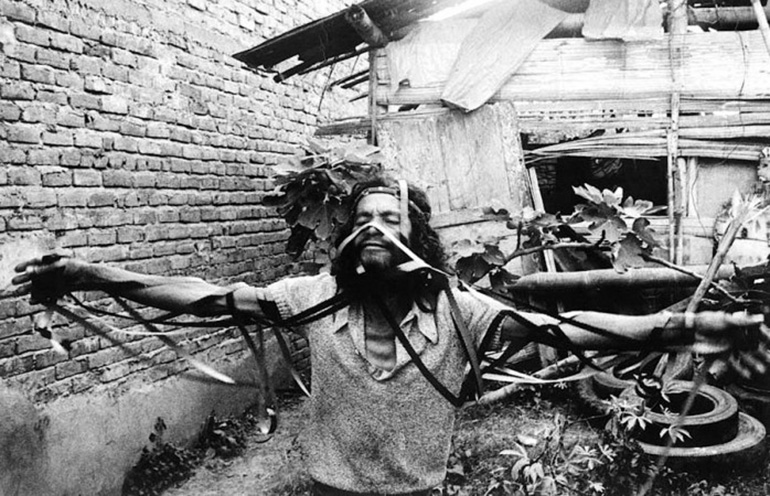
Dirdamal jumped out of his spectator role without academic formation or film school, as we may image anyone could do today, and as García Espinosa had envisioned with his advocacy of de-professionalization: he learned alone, in the fire of praxis and thanks to having a camera. But he was not so alone. He did it after having had the chance to study at the university. He rejected the type of knowledge that institution offered him. When a poet and filmmaker does emerge from a slum, such as the phenomenal César González (alias Camilo Blajaquis) in ‘Carlos Gardel’ in the outskirts of Buenos Aires, we are invited to feel the impact of that heroic jump made by a man who grew up in the midst of hunger and violence, who became a thief, who ended up doing five years of jail, and who finally landed back in life as an artist. His incredible critical thinking about the system that made him a victim –not a willful delinquent– was nurtured by (as he narrates in interviews) the gestures of love of a professor teaching in the prison. It was through this teacher that he ended up knowing who Che Guevara was, what the Cuban revolution had done, and what Michel Foucault had written. Today he fulfills the democratic dream of Third Cinema, filming in slums with street children and finding national outlets to show his movies. As he himself says, one had to understand first: ‘to want to understand how this world is and not deny it […] knowing how it is, is a great first step […] a kid that acts in my movies, and who comes from the slum, this means for me that the world changes, we have to know how to see small victories.’ And, as he says, every slum kid, in the end, can understand: it suffices to give them a hand.9
The second planetary key of Third Cinema was a prescription for how to stop being a spectator: transform the chaos of misery into something intelligible. For Third Cinema filmmakers this was codified in Rocha’s famous dictum – ‘a camera in your hand and an idea in your head’– and it was expressed in each and every one of the manifestos in various ways. Solanas and Getino, Birri, Sanjinés and Rocha dedicated more paragraphs than others to the necessity of a political thesis about what they were filming – the ‘negation’ of ‘reality as it is,’ as Birri would put it. In the best tradition of the Brazilian artistic avant garde, Rocha equated cultural processes to digestive ones in his Aesthetics of Hunger. ‘Digestive cinema’ was emptied of ideas, whereas the indigestible ‘aesthetics’ of hunger of Cinema Novo were full of ideas. For Rocha aesthetics had a mission to ‘understand’ the violence of hunger –its violence on the human body, on the mind– and thus, to understand violent action as the only way out. Cinema was ‘a gallery of starving people’: characters ‘eating earth, eating roots, stealing to eat’ in order to be able to speak hunger in its reality. ‘The Brazilian does not eat but he is ashamed to say so, and most of all, he does not know where this hunger comes from’; ‘our greatest misery is that our hunger is felt but it is not understood’; ‘The Latin American neither communicates his real misery to the “civilized” European, nor does the European truly comprehend the misery of the Latin American’; ‘there are only lies sold as truths’, ‘a series of misunderstandings’; ‘philosophical emaciation’ or ‘sterility’ or ‘hysteria’ in the way we tell our story, with ‘impetuous discourses’ that we transmit to the colonizer, who does not understand us because we lack lucidity: ‘And, if he understands us, it is not due to the lucidity of our dialogue, but to the humanism that our information inspires in him’. (ROCHA, 1965). Sanjinés devoted an entire section to the issue of ‘communication’ in his manifesto-essay Problems of form and content in revolutionary cinema (1976). For Sanjinés and the Ukamau group, ‘the stimulation of reflection’ was imperative, as was the capacity to generate spaces for participation in production and filmmaking in order to think collectively.
For all the documentarians that I mentioned above the issue is also that of raising consciousness. Dirdamal frames his No One with an almost ‘biblical’ reference from the sixties, none other than Eduardo Galeano. He offers statistics and political explanations. Experts abound in documentaries about the war on water. But we don’t know anymore if our social order is committing suicide: ‘the problem of water has no solution.’
Our urgency for change is as pressing as it was in the sixties, but it has a different content. The key to becoming intelligible in the sixties, the third planetary key that I have mentioned, was the change of forms, against the psychological narration that commercial Latin American cinema adopts today (even if sometimes mixing them with classic documentary strategies). The enemy in Aesthetics of Hunger was ‘our language of tears’ and ‘of silent suffering.’ For Rocha, that language could not have the ‘lucidity’ to communicate with the colonizer. In reality, this language was an old enemy; Vertov would write in the Revolution (1923): ‘all efforts, sighs, tears and expectations, all prayers are directed toward the six-act film-drama’ (1923: 14); in his Kinocs: A Revolution (1923) the number one enemy of the new cinema was identified as: ‘a friendly warning: Raise your eyes, Look around you- There. It’s obvious to me as to any child, the innards, the guts of strong sensations are tumbling out of cinema’s belly, ripped open on the reef of revolution. […] It’s all over.’ (1923: 11-12).
Sanjinés dedicated long paragraphs to the ‘formal choice of the creator’ as obeying ‘profound ideological inclinations’ and analyzed forms as ideological carriers: ‘to use the sensational language of commercials for a work on colonialism is a serious incongruence; the one minute spot […] is calculated for the defenseless spectator.’ Ukamau’s experience filming The Blood of the Condor had been their biggest lesson: they had chosen forms (the close-up for example) that had little to do with the way indigenous communities (acting in the film) saw the world. Sanjinés meditated on the mistake of those close-ups and chose finally for an ‘objective’ gaze that would prevent him from imposing his point of view as director: a ‘non psychological gaze, that facilitates participation’ of indigenous cultures where the notion of the individual does not predominate and a close-up diminishes the ‘freedom to think, act, invent.’
Dirdamal does not avoid tears in No One. But those tears are not from the traveling migrants: they are from those who see them migrate, those who are inside the system. Of migrants, we hear and see what they want to tell us. The only interviewee that cries on camera is the woman who in the end vanishes without a trace: an ‘aesthetics of absence’ for a time that has not yet found a way not to commit suicide. Eliecer Jiménez’s documentary does not offer images of clean water; the montage saturates us and explains everything. Meanwhile, Quemada-Díez’s commercial cinema ‘with social content’ appeals to the desire for dramatic structure and a bit of suspense and adventure – but we may note that it also ends almost in an ‘aesthetics of absence.’ Juan is left alone, with no friends, in the cold winter night where he does not belong, and with a job out of which we cannot imagine an escape. The last scene in Vega’s fiction, Thirst, is void of humans.
To evaluate the relevance of the three planetary keys that I identified in the manifestos of the sixties, it may be useful to remember the phrase in the Mexican Manifiesto del Frente Nacional de Cinematografías (1975, Paul Leduc, Jorge Fons, Raúl Araiza, et al): ‘insofar as cinema is a social activity of humanity, it can only change to the extent that social structures change’ (my translation). And then we may imagine how to appropriate these three planetary keys for a cinema that can rise to the occasion of having to intervene in a social order whose relation to suicide is not yet clear, in a visual regime that limits our vision beyond cell phone screens, in a surveillance system that makes difficult the creation of other worlds/other montages out of the ‘route of hell’ of the train, the hunger, and the thirst of today. What cinema and what manifesto can be written for the absence of certainties about whether ‘this planet will not extinguish us’? The ‘planetary’ in the sixties manifestos has several geological layers: what should we film and what should we write to make visible the gap between the excluded and the expelled, who have no potable water; to perceive what the ‘democratic’ cell phone screen occludes; to insist that the cost of paper on which to print film programs confronts us with the need of a ‘geology of morals’ that may imagine ‘a future that is not one’?10
FOOTNOTES
1 / Unless specified, English versions of the manifestos come from MARTIN, 1997. Rocha’s quotations are my translations from the Portuguese and Spanish versions in Glauber Rocha: del hambre al sueño (Fundación Constantini, 2004: 38-42).
2 / For phantom rides in silent cinema see the famous example from North Devon in 1898: https://www.youtube.com/watch?v=o-B3f1z1gTY
3 / My translation: I decided to keep the awkwardness of the Spanish original ‘los nadies’ (the ‘no-ones’), which would not be normally accepted as correct grammar.
4 / The Spanish phrase is a pun between two meanings of the word ‘tomar’: drink and grab. Thus the phrase in Spanish for ‘become conscious’ is ‘to drink consciousness’ (instead of water).
5 / See the silent films of Cinematografía Valle (by Federico Valle) in Argentina. For a study about cinema and trains, see KIRBY, 1997. For comparisons between modernity, trains and cinema see the often quoted study: The Railway Journey (SCHIVELBUSCH, 1996).
6 / The Kino Pravda newsreels, like this one, can be found in YouTube: https://www.youtube.com/watch?v=J0SJyLX9MgQ
7 / I refer here to the phrase coined by Ignacio Ramonet in his 1995 editorial in Le Monde Diplomatique, re-appropriating the ‘one-dimensional thought’ noted by Herbert Marcuse precisely in the sixties.
8 / The manifest was first published in Cine Cubano.
9 / There are many interviews in YouTube; see for example: https://www.youtube.com/watch?v=-fzd9uRq9-A; https://www.youtube.com/watch?v=zZzum91sNiM
10 / I refer to the famous chapter in Deleuze’s and Guattari’s A Thousand Plateaus (1980/1987: 39-74). As to ‘a future that is not one’ I play with the famous title of Luce Irigaray’s book This Sex which is not one (1977/1985).
ABSTRACT
In this essay I establish continuities and discontinuities between our present and the historical context in which Latin American Third Cinema manifestos were written in the sixties, in order to offer some ideas about the relevance of these manifestos today. I draw a minimalist itinerary of emblematic images that political cinema and its manifestos have been articulating since their inception at the beginning of the twentieth century to this day –which center around trains, hunger and thirst– all the while marking a difference between the twentieth century context and our times. While the twentieth century offered certainties about the possibility of different social orders, our present is characterized by the lack of certainty about the survival of the human species on earth and the lack of imagination about alternative forms of social organization. To think the relevance of the sixties manifestos in today’s uncertainty, I identify three fundamental ideas that run through all Third Cinema manifestos. I call these ideas the manifestos’ ‘planetary keys’ in that, even in the sixties, they postulated their validity beyond the local. They refer to 1) the necessity to transform the spectator into an author, 2) the imperative to turn the chaos of misery into something intelligible, and 3) the change in filmic language that would avoid reproducing dominant dramatic structures and offer a different intelligibility of reality by articulating visual stories with a political analysis. I mention images and manifestos by Dziga Vertov, Glauber Rocha, Margot Benacerraf, Fernando Birri, Jorge Sanjinés, Julio García Espinosa, as well as contemporary films by Tin Dirdamal and Diego Quemada-Díez.
KEYWORDS
Third Cinema, Latin American Cinema manifestos, film and politics, Tin Dirdamal, Dziga Vertov, Glauber Rocha, Jorge Sanjinés, Julio García Espinosa, capitalocene, Diego Quemada-Díez.
BIBLIOGRAPHY
BIRRI, Fernando (1962) Cine y subdesarrollo. Cine Cubano, Vol. 64. Republished in BIRRI, Fernando (1996) Fernando Birri: El alquimista poético-político: Por un nuevo nuevo nuevo cine latinoamericano 1956-1991. Madrid: Cátedra / Filmoteca Española.
COMOLLI, Jean-Louis (2007) Ver y Poder. Buenos Aires: Aurelia Rivera.
COOKE, John William (1973) Peronismo y revolución. Buenos Aires: Granica, 3rd ed.
DAVIS, Mike (2006) Planet of Slums. London: Verso.
DELEUZE, Gilles and GUATTARI, Félix (1980/2004) A Thousand Plateaus. Minneapolis: University of Minnesota Press. Translated by Brian Massumi.
DORLING, Danny (2014) Inequality and the 1%. London: Verso.
FANON, Frantz (1961/2004) The Wretched of the Earth. New York: Grove Press. Translated by Richard Philcox.
Fundación Constantini: Glauber Rocha: del hambre al sueño (2004). Buenos Aires: Fundación Constantini, MALBA.
GARCÍA ESPINOSA, Julio (1969) Por un cine imperfecto. In Un largo camino hacia la luz (2002) (pp. 11-27). La Habana: Casa de las Américas.
GOODMAN, Amy and GONZÁLEZ, Juan (2015) Extended Interview with Director Diego Quemada-Díez on “La Jaula de Oro” and Migration to the U.S. Democracy Now!, 15 September 2015. Retrieved from: https://www.democracynow.org/2015/9/15/la_jaula_de_oro_new_feature
HARAWAY, Donna (2015) Anthropocene, Capitalocene, Plantationocene, Chthulucene: Making Kin. Environmental Humanities, Vol. 6, pp. 159-165.
Indiewire (2006) PARK CITY’06: Tin Dirdamal: “I became a filmmaker by accident.” Indiewire, 21 January 2006. Retrieved from: http://www.indiewire.com/2006/01/park-city-06-tin-dirdamal-i-became-a-filmmaker-by-accident-77340/
IRIGARAY, Luce (1977/1985) This Sex Which Is Not One. Ithaca: Cornell University Press. Translated by Catherine Porter and Carolyn Burke.
KIRBY, Lynne (1997) Parallel Tracks: The Railroad and Silent Cinema. Durham: Duke University.
LEDUC, Paul, ARAIZA, Raúl, CAZALS, Felipe et al. (1975) Manifiesto del Frente Nacional de Cinematografistas. Otrocine, Year 1, Vol. 3, July-September 1975. Retrieved from: http://cinelatinoamericano.org/biblioteca/assets/docs/documento/571.pdf
PIKETTY, Thomas (2013) Le Capital. Paris: Éditions du Seuil.
RAMONET, Ignacio (1995) La pensée unique. Le Monde Diplomatique, january 1995.
ROCHA, Glauber (1965). Eztetyka da fome. In Revolução do cinema novo (2004) (pp. 63-67). São Paulo: Cosac Naify.
SANJINÉS, Jorge and Grupo Ukamau (1976). Problemas de la forma y del contenido en el cine revolucionario. In Teoría y práctica de un cine junto al pueblo (1979) (pp. 38-73). México D.F.: Siglo XXI.
SASSEN, Saskia (2014). Expulsions: Brutality and Complexity in the Global Economy. Cambridge, Massachusetts: The Belknap Press of Harvard University Press.
SCHIVELBUSCH, Wolfgang (1986) The Railway Journey. Berkeley: University of California.
VERTOV, Dziga (1923) Kinoks: A Revolution. MICHELSON, Annette (ed. and intro) (1984) Kino-Eye: The Writings of Dziga Vertov (pp. 11-21). Berkeley, Los Angeles and London: University of California Press. Translated by Kevin O’Brien.
MOIRA FRADINGER
Associate Professor in the Department of Comparative Literature at Yale University and author of Binding Violence: Literary Visions of Political Origins (Standford University Press, 2010). She teaches European and Latin American literature, philosophy and cinema, as well as critical theory. She is finishing a book on the Latin American rewritings of Antigone in the twentieth century, entitled Antígonas: A Latin American Tradition, and the English translation of an anthology of five theatre plays about Antigone. Additionally, she is working on three books: one on contemporary Argentine gender identity debates; a second one on Latin American Third Cinema; and one on the transatlantic anarquist imagination.

